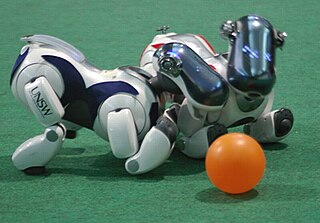| Toshitada Doi | |
|---|---|
| Born | February 2, 1943 Japan |
| Alma mater | Tokyo Institute of Technology Tohoku University |
| Occupation | Engineer |
Toshitada Doi(土井 利忠Doi Toshitada, born February 2, 1943) is a Japanese electrical engineer, who played a significant role in the digital audio revolution. He received a degree in electrical engineering from the Tokyo Institute of Technology in 1964, and a PhD from Tohoku University in 1972.

Tokyo Institute of Technology is a national research university located in Greater Tokyo Area, Japan. Tokyo Tech is the largest institution for higher education in Japan dedicated to science and technology, and is generally considered to be one of the most prestigious universities in Japan.

Tohoku University, abbreviated to Tohokudai, located in Sendai, Miyagi in the Tōhoku Region, Japan, is a Japanese national university. It was the third Imperial University in Japan and is one of the National Seven Universities. It is considered one of the most prestigious universities in Japan, and one of the top fifty universities in the world.
Contents
He joined Sony Japan in 1964 and started the first digital audio project within Sony. He was the driving force behind the PCM adaptor, and was a prominent member of the Sony/Philips taskforce responsible for the design of the Compact Disc. [1] He created, among others, the CIRC error correction system. [2] He, with Kees Immink, refutes the myth that the Compact Disc's playing time was determined by Beethoven's Ninth Symphony. [3]

Sony Corporation is a Japanese multinational conglomerate corporation headquartered in Kōnan, Minato, Tokyo. Its diversified business includes consumer and professional electronics, gaming, entertainment and financial services. The company owns the largest music entertainment business in the world, the largest video game console business and one of the largest video game publishing businesses, and is one of the leading manufacturers of electronic products for the consumer and professional markets, and a leading player in the film and television entertainment industry. Sony was ranked 97th on the 2018 Fortune Global 500 list.

A PCM adaptor is a device that encodes digital audio as video for recording on a videocassette recorder. The adapter also has the ability to decode a video signal back to digital audio for playback. This digital audio system was used for mastering early compact discs.

Kornelis Antonie "Kees" Schouhamer Immink is a Dutch scientist, inventor, and entrepreneur, who pioneered and advanced the era of digital audio, video, and data recording, including popular digital media such as Compact Disc, DVD and Blu-ray Disc. He has been a prolific and influential engineer, who holds more than 1100 U.S. and international patents. A large portion of the commonly used audio and video playback and recording devices use technologies based on his work. His contributions to coding systems assisted the digital video and audio revolution, by enabling reliable data storage at information densities previously unattainable.
He was the lead engineer of the DASH multi-track digital audio tape recorder. [4] In the 1990s, he headed Sony's Digital Creatures Laboratory, where he was responsible for the Aibo, [5] Sony's robotic dog. In 2003, Doi created the Qrio, a running humanoid robot.
The Digital Audio Stationary Head or DASH standard is a reel-to-reel, digital audio tape format introduced by Sony in early 1982 for high-quality multitrack studio recording and mastering, as an alternative to analog recording methods. DASH is capable of recording two channels of audio on a quarter-inch tape, and 24 or 48 tracks on 1⁄2-inch-wide (13 mm) tape on open reels of up to 14 inches. The data is recorded on the tape linearly, with a stationary recording head, as opposed to the DAT format, where data is recorded helically with a rotating head, in the same manner as a VCR. The audio data is encoded as linear PCM and boasts strong cyclic redundancy check (CRC) error correction, allowing the tape to be physically edited with a razor blade as analog tape would, e.g. by cutting and splicing, and played back with no loss of signal. In a two-track DASH recorder, the digital data is recorded onto the tape across nine data tracks: eight for the digital audio data and one for the CRC data; there is also provision for two linear analog cue tracks and one additional linear analog track dedicated to recording time code.










